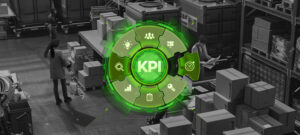In recent years, the warehouse industry has undergone significant transformations, particularly after the rapid growth of ecommerce. The increasing demand for online purchases has compelled companies to reassess and enhance their warehouse operations to effectively meet new challenges.
Today, in the era of advanced technologies, enterprises already have broad access to innovative solutions. The logistics and warehousing industry is becoming more automated, intelligent, and environmentally sustainable.
In 2024, warehouse infrastructure will continue to evolve. To successfully adapt to future challenges and opportunities, companies must always stay abreast of the latest trends in warehouse management. In our article, we will introduce you to the key warehousing trends that may impact your business in 2024.
- Automation and Robotic Technologies
- Wearable Warehouse Technologies
- RFID Warehouse Management System
- Sustainable Development
- AI in Warehouse Management
- Internet of Things (IoT)
- Immersive Technology
- Blockchain Technology
- Fleet Management
1. Automation and Robotic Technologies
One of the leading trends is warehouse automation and robotics. Faced with a constantly growing volume of orders and a shortage of labor, companies are increasingly automating their warehouse operations.
At the forefront of these changes are automated storage and retrieval systems (AS/RS), mobile robots, drones, and warehouse management systems. These devices perform various tasks, ranging from moving goods within the warehouse to sorting and packaging orders. Their implementation enhances operational efficiency and significantly reduces the need for labor.
In 2024, the warehouse automation trend is not going away; instead, it will become even more advanced, adapting to the changing market requirements. Companies aiming to remain competitive will actively implement advanced technologies. According to the 2023 MNI report, 74% of supply chain leaders have already invested in automated technologies, and 90% plan to spend more than 1 million dollars on automation.
2. Wearable Warehouse Technologies
As early as 2012, the spirits production department in the state of Wyoming achieved a 99.9% accuracy level in order picking using innovative voice solutions in its facility. Today, technologies continue to evolve, elevating the industry to higher levels of efficiency and accuracy. They provide employees with additional capabilities, enhancing mobility, connectivity with information, and overall operational efficiency.
Smart Glasses
One of the progressive directions in the development of wearable technologies is smart glasses. They enable employees to receive real-time information about products, their location, and status by simply looking at the relevant object. This simplifies order picking, inventory management, and product movement processes. DHL, for instance, tested smart glasses as early as 2015. During the experiment, the company was able to increase the productivity of employees at one of its warehouses in the Netherlands by 25%.
Voice Control
Pick-by-Voice decisively transforms traditional picking methods, freeing up employees’ hands and increasing overall productivity. Warehouse staff are equipped with special headphones and microphones connected to a voice control system. Using voice commands, they can efficiently navigate the warehouse, receive assembly instructions for products, and confirm task completion.
Today, pick-by-voice technology has been successfully integrated into the warehouse systems of many companies, bringing the desired improvements to assembly processes and reducing the likelihood of errors. Further development and widespread use in the future will offer new opportunities for optimizing logistics processes and increasing the efficiency of warehouse management.
Wrist-mounted Scanners
Another warehouse trend is the use of wearable barcode scanners and RFID tags integrated into gloves or wrist devices. They can provide fast and accurate reading of product information, significantly reducing inventory time and improving accuracy in accounting.
Exoskeletons
Exoskeletons provide employees with the ability to lift and move heavy loads with minimal physical strain. This significantly reduces the risk of injuries and improves overall working conditions.
Today, the trend of wearable warehouse technologies is actively being integrated into warehouse processes. It not only enhances productivity but also improves working conditions, reduces the number of errors, and enhances overall operational efficiency. In 2024, further development of this trend can be expected, including more integrated and intelligent solutions.
3. RFID Warehouse Management System
RFID utilizes radio frequency tags and readers for contactless identification and tracking of goods. This method is more efficient compared to traditional barcode methods. One of its key advantages is the ability to simultaneously read multiple tags in a scanned period. This speeds up inventory and order picking processes, which is particularly crucial in large warehouses with significant product volumes.
RFID can also provide higher accuracy in real-time tracking of goods. Human intervention is reduced, leading to a decrease in errors and an improvement in inventory accuracy. This is particularly critical in conditions of high demand dynamics and complex supply networks.
The trend of implementing RFID systems is also associated with enhancing warehouse security and preventing loss of goods. Such systems can be used to combat theft and ensure compliance with product tracking requirements for security and quality standards.
In 2024, further proliferation of RFID technologies can be expected. There may even be developments in more integrated solutions, including combinations with other technologies such as IoT and artificial intelligence.
4. Sustainable Development
According to the ‘Global Sustainable Development 2021‘ study, 85 percent of consumers have shifted their purchasing preferences towards sustainable development in the last five years. Warehousing enterprises, facing this change in consumer behavior and increased legislation, are increasingly adopting principles of sustainable development. Today, it is one of the key trends in warehouse development.
One key aspect of this trend is the shift towards environmentally sustainable practices in packaging and material usage. Companies are increasingly exploring the use of biodegradable packaging materials and improved waste recycling methods in warehouses. The Spanish logistics service provider Logifruit, for example, achieved a 20% reduction in carbon dioxide emissions by reusing packaging.
Many warehouses today are adopting innovative technologies aimed at reducing greenhouse gas emissions. This includes efficient energy management systems and a transition to renewable energy sources.
The development of ‘green’ technologies and sustainability standards will continue to play a key role in the warehouse industry in 2024. Companies adhering to these principles can expect both environmental and economic benefits.
5. AI in Warehouse Management
One of the latest trends in warehouse management is artificial intelligence. With its ability to analyze data and make automated decisions, it is actively applied in warehouse management. One of its key advantages is the improvement of demand forecasting accuracy and inventory management. Machine learning algorithms can analyze vast amounts of data on sales, seasonal trends, and other factors, allowing companies to more accurately determine which products and in what quantities should be stored in the warehouse.
The use of AI also enhances the efficiency of planning and routing within the warehouse. Algorithms can optimize the distribution of goods, determine optimal movement routes, and manage robots and autonomous vehicles within the warehouse.
In 2023, major ecommerce companies such as Amazon, Walmart, and DHL had already successfully implemented artificial intelligence technologies to enhance the efficiency of their warehouse processes. In 2024, an even broader adoption of the AI trend in warehousing can be expected. Forecasting models, supported by accumulated volumes of data, will become more precise. This will enable companies to forecast more accurately and adapt to changes in demand.
6. Internet of Things (IoT)
IoT enriches decision-making processes and enhances operational efficiency in warehouses. One key aspect of this trend is the tracking and monitoring of goods using sensors and RFID tags. This allows companies to receive real-time information about the location, condition, and movement of goods in the warehouse. Accurate and up-to-date inventory information contributes to more effective inventory management and prevents stockouts.
IoT systems also support the monitoring of storage conditions. Sensors installed in warehouses, containers, and vehicles can track temperature, humidity, and other parameters. This ensures the safety and quality of stored products.
In 2024, the IoT warehousing trend will continue to evolve. The widespread adoption of technologies, such as AI-integrated systems, will create opportunities for more intelligent and flexible management of supply chains and warehouse operations.
7. Immersive Technology
The trend of immersive technologies in warehouse management involves the integration of virtual and augmented reality to enhance storage, tracking, and inventory management processes. These technologies create a deeper and more engaging experience for employees, increasing efficiency and task accuracy.
One example of the use of immersive technologies in warehouse management is the application of virtual reality (VR) for staff training. Employees can use VR headsets for training in virtual warehouse conditions, facilitating quicker and more effective acquisition of skills and procedures.
VR enables the creation of virtual models of warehouses, where managers can optimize the placement of goods in real-time. This improves spatial organization and reduces the time spent searching for items. Additionally, VR can be used to assess the effectiveness of new product placement plans, avoiding issues and optimizing processes before actual implementation.
VR can integrate with warehouse management systems, providing managers with a visual representation of the current inventory status. This helps them make faster and more informed decisions.
8. Blockchain Technology
Blockchain is a decentralized database where records are stored as blocks, linked together and secured by cryptography. Each transaction and movement of goods can be recorded on the blockchain. This ensures data immutability and enables precise tracking of the history of product movements from the manufacturer to the end consumer.
With smart contracts that automatically execute specific conditions upon reaching certain events, blockchain can automate inventory management processes. This allows for the optimization of order, payment, and delivery processes, reducing time and avoiding unnecessary bureaucratic procedures.
Blockchain technology can also provide enhanced security and protection against fraud. Due to the cryptography and decentralized nature of blockchain, data about goods and transactions are more resistant to hacking and falsification.
The trend of implementing blockchain technology in warehousing is actively evolving due to its transparency and security. The year 2024 may bring further innovations and enhancements in logistics and inventory management.
9. Fleet Management
The management of warehouse equipment is becoming increasingly intelligent. The integration of artificial intelligence into fleet management systems allows the application of machine learning algorithms to optimize routes and plan operations.
Smart technologies also include vehicle diagnostic systems that can prevent breakdowns and address issues before they become serious. This helps reduce downtime and ensures more efficient fleet maintenance.
Conclusion
The year 2024 will provide unprecedented opportunities for improving productivity, reducing costs, and enhancing sustainability. With a changing business landscape, companies must not only stay abreast of the latest trends in warehouse management but also actively prepare for future challenges. Ysell.pro is a modern, easily scalable solution, making it an ideal choice for companies aiming for continuous growth and development. With it, you can adapt to varying operational volumes, growing customer needs, and changing market requirements.
Whether you are a small business or a large corporation, Ysell.pro provides tools for efficiently managing warehouse operations at any scale. By adapting to new realities, your company will be able to successfully meet the challenges of 2024 and ensure its competitiveness in the dynamic warehouse industry environment.







